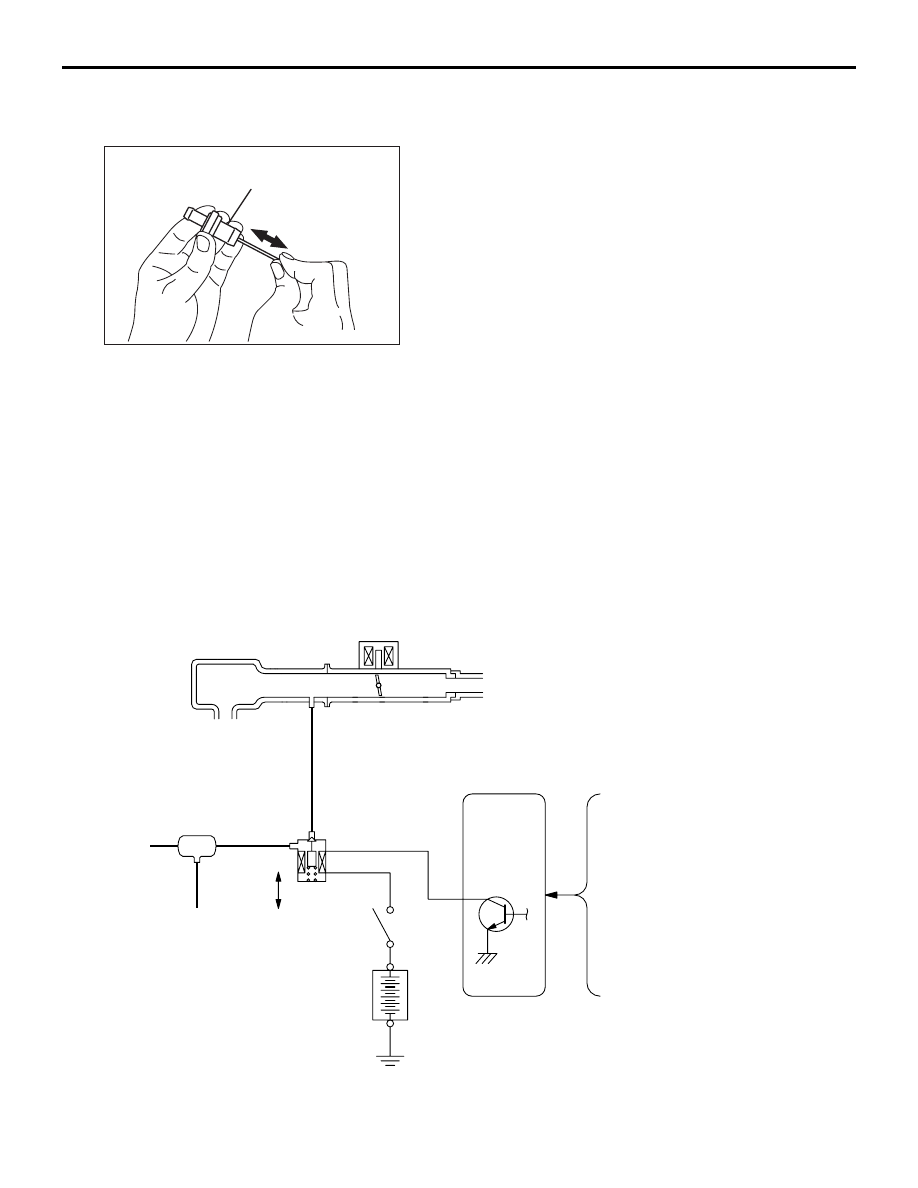Mitsubishi Grandis. Manual - part 805

EMISSION CONTROL <MPI>
ENGINE AND EMISSION CONTROL
17-61
POSITIVE CRANKCASE VENTILATION
(PCV) VALVE CHECK
M1173001200217
1. Insert a thin rod into the PCV valve from the side
shown in the illustration (rocker cover installation
side), and move the rod back and forth to check
that the plunger moves.
2. If the plunger does not move, there is a clogging
in the PCV valve. In this case, clean or replace
the PCV valve.
EVAPORATIVE EMISSION CONTROL
SYSTEM
GENERAL INFORMATION (EVAPORATIVE
EMISSION CONTROL SYSTEM)
M1173005100524
The evaporative emission control system prevents
fuel vapours generated in the fuel tank from escaping
into the atmosphere.
Fuel vapours from the fuel tank flow through the fuel
tank pressure control valve and vapour pipe/hose to
be stored temporarily in the canister.
When driving the vehicle, fuel vapours stored in the
canister flow through the purge control solenoid
valve and purge port and go into the intake manifold
to be sent to the combustion chamber.
When the engine coolant temperature is low or when
the intake air quantity is small (when the engine is at
idle, for example), the engine control unit turns the
purge solenoid off to shut off the fuel vapour flow to
the intake manifold.
This does not only insure the driveability when the
engine is cold or running under low load but also
stabilize the emission level.
SYSTEM DIAGRAM
AK300022
PCV valve
AC
AK302829AB
Intake manifold
Canister
From
fuel
tank
OFF
ON
Purge
control
Solenoid
valve
Control
relay
Battery
Engine-ECU <M/T> or
Engine-A/T-ECU <A/T>
Air flow sensor
Engine coolant
temperature sensor
Intake air
temperature sensor
Barometric pressure sensor
(with engine-ECU <M/T>
or engine-A/T-ECU <A/T>)